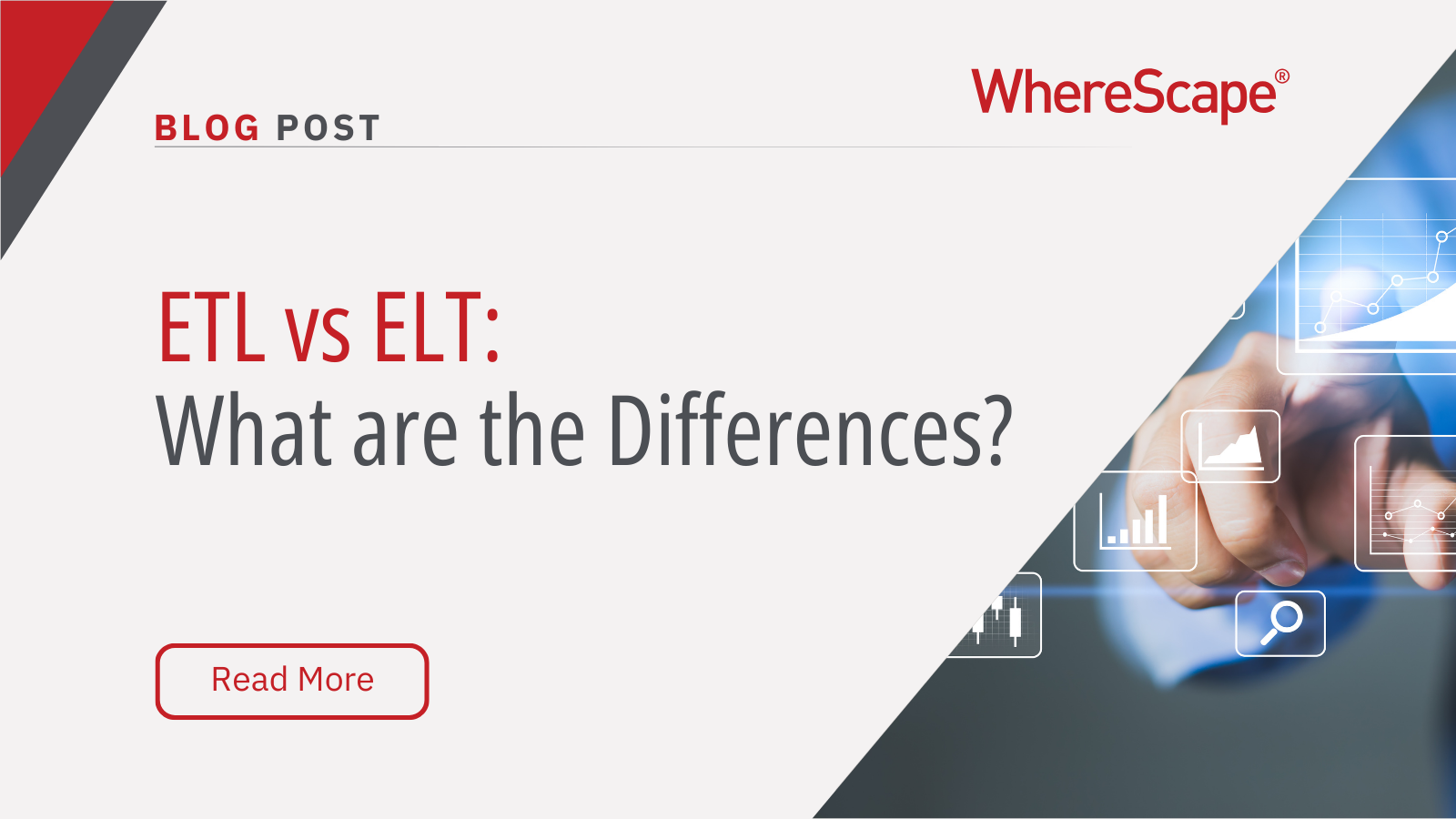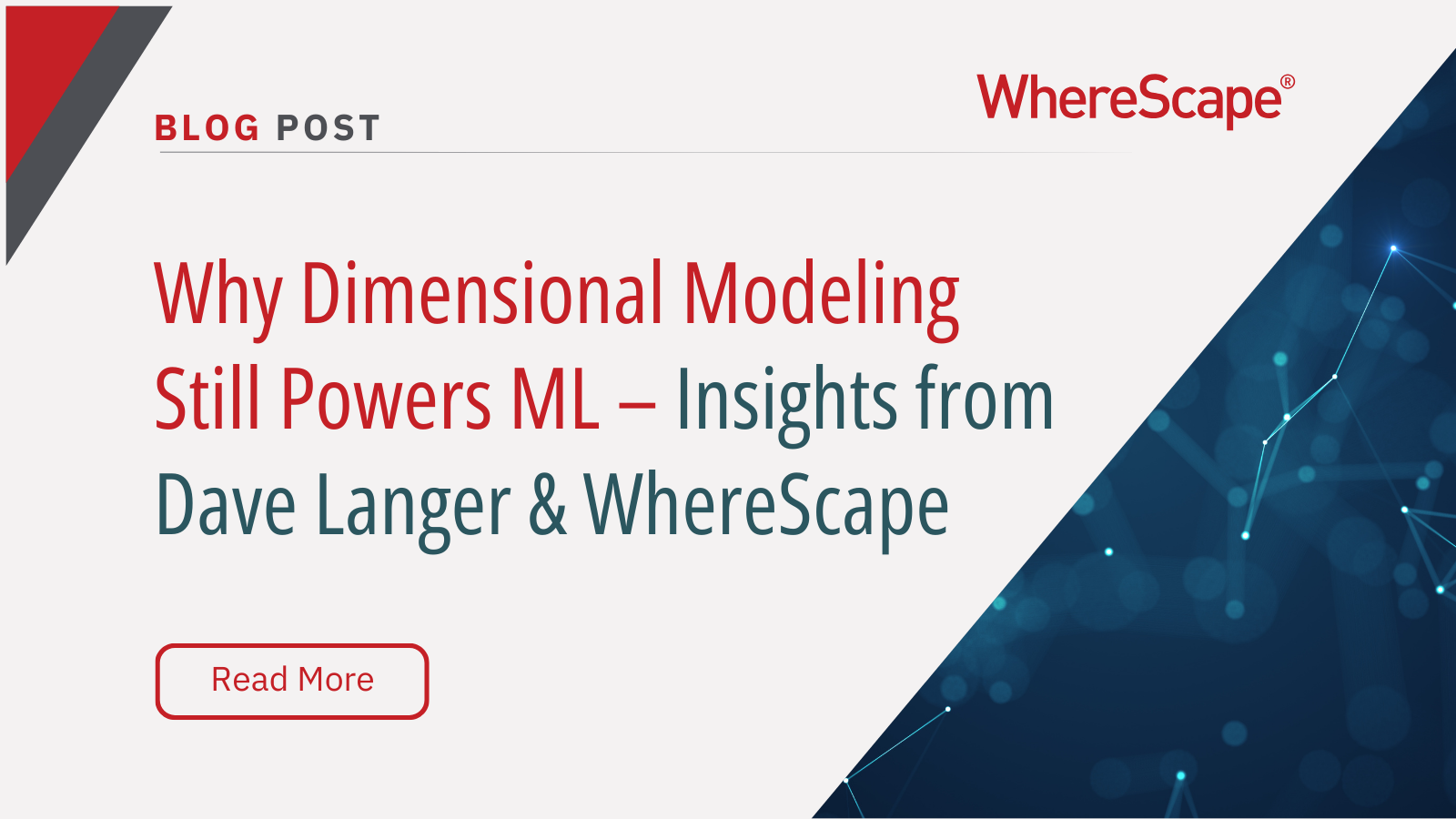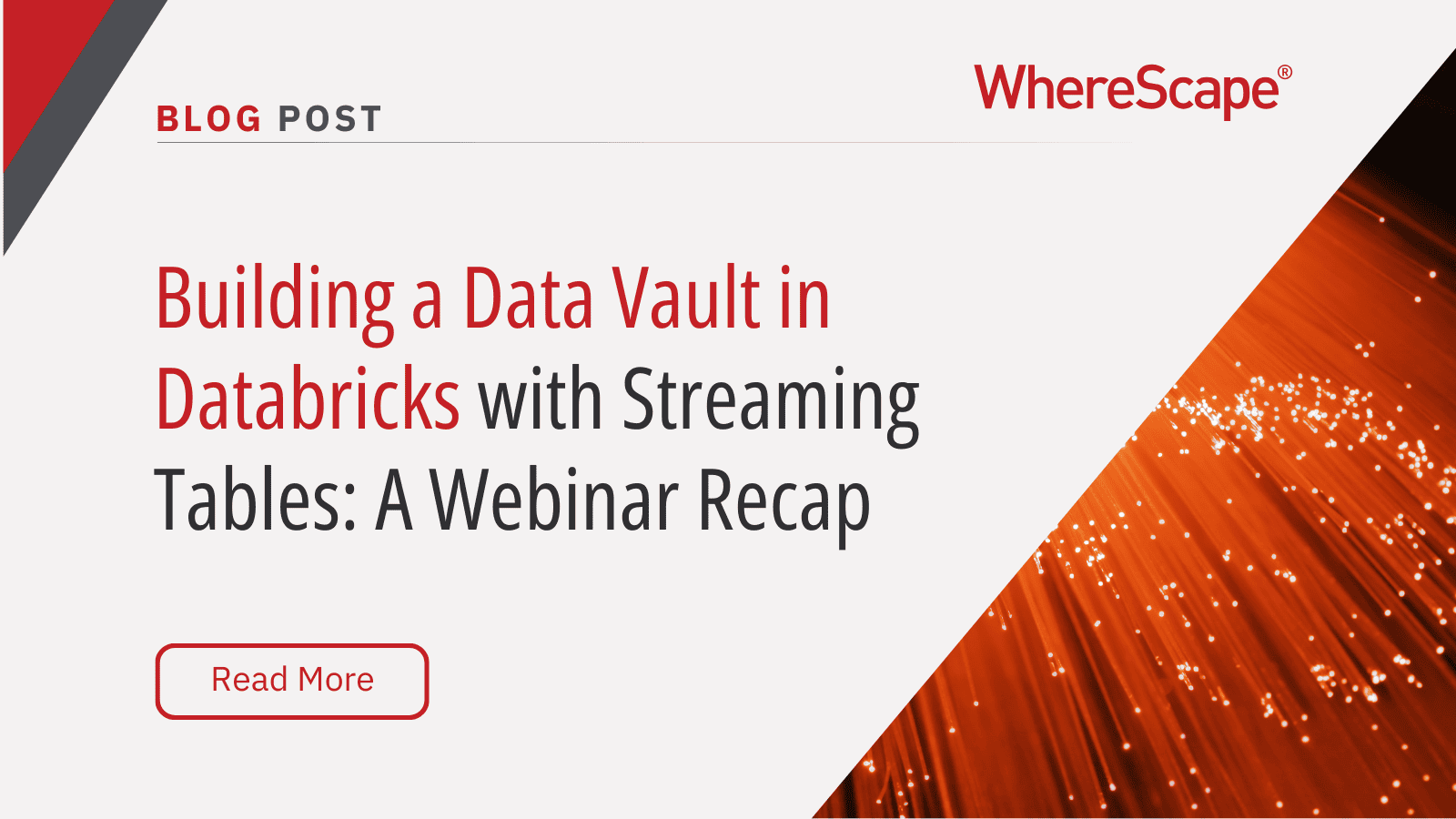Join us for a 60-minute live demo of...
Embracing the Future of Data Management Recap: Insights from Mike Ferguson
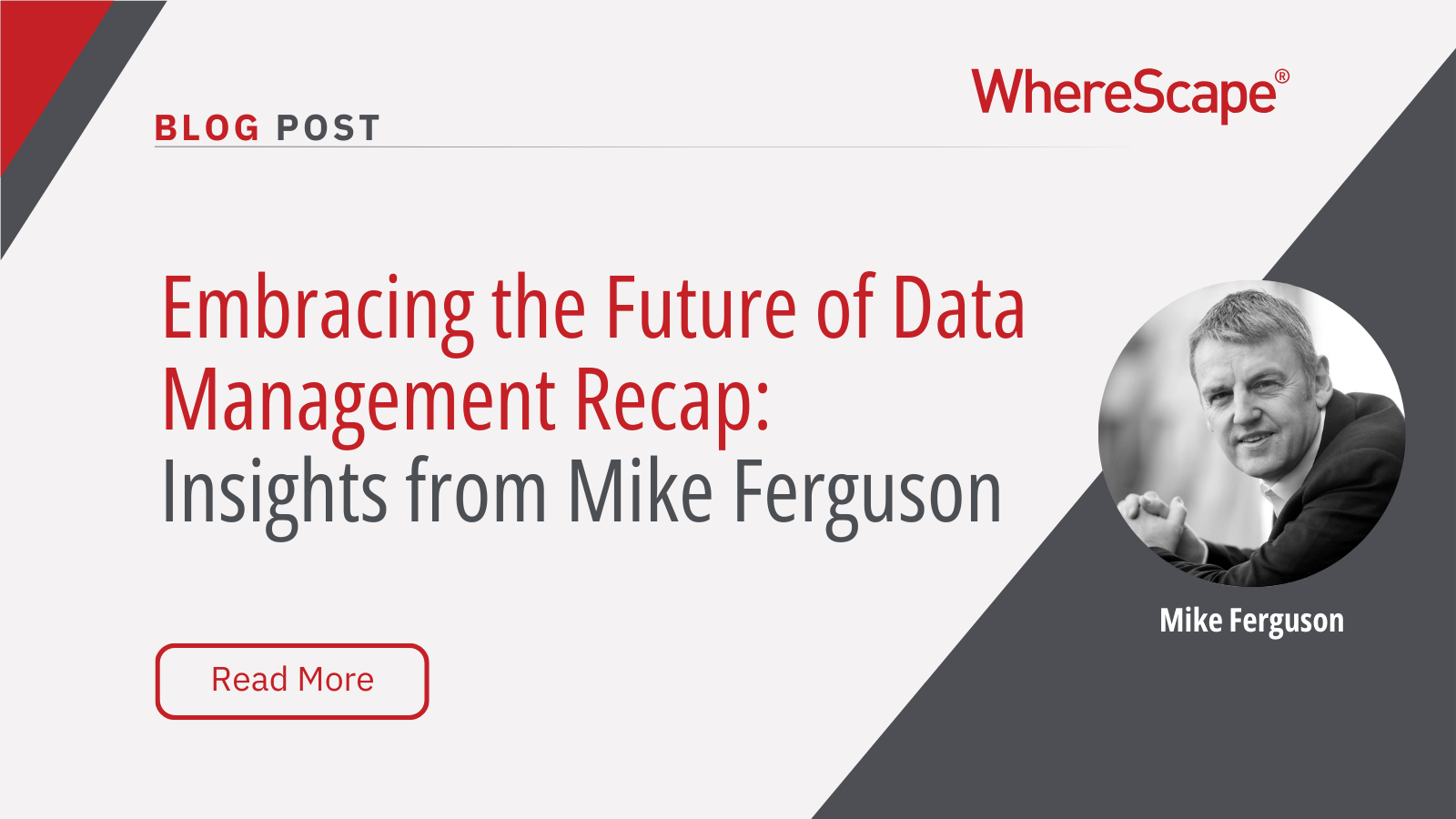
In our recent webinar, “Embrace the Future of Data Management with Automated Cloud Data Warehousing,” we had the privilege of diving into the transformative world of cloud data warehousing and highlighting the pivotal role of automation. Guided by our own Brad Kloth, our Manager of Solutions Architects, and complimented by the expertise of guest speaker Mike Ferguson, CEO and Head of Research of Intelligent Business Strategies Limited, the session was an enlightening journey through the evolution, current trends, and the promising future of data management technologies.
During the webinar, we meticulously explored how automation-backed cloud data warehousing, is revolutionizing the way businesses harness their data for insights and decision-making. With Mike Ferguson’s extensive 40 years of expertise, participants gained unparalleled insights into the advancement of data architectures, the benefits of moving data management to the cloud, and how WhereScape’s automation solutions are empowering businesses to navigate the complexities of data warehousing with greater efficiency and agility. This session was a testament to WhereScape’s commitment to driving innovation in data management.
The Current State and Challenges of Analytical Data Stores
Mike’s presentation touched upon the present scenario in which many organizations find themselves managing a complex array of analytical data stores, including traditional data warehouses, data lakes, and specialized databases. He pointed out the trend of companies increasingly looking towards the cloud to build or migrate their data warehouses, leveraging the cloud’s advanced capabilities which often precede those available on-premises.
“A lot of my clients are still operating in silos. That means that the folks working on data warehouse are not the same to the folks who are working on graph databases and are not the same as the folks doing data science or streaming analytics.”
– Mike F.
A significant challenge identified by Mike is the siloed nature of data management within organizations. He noted that different teams, focusing on separate elements like data warehouses, graph databases, and data science, often work in isolation without a unified approach. This lack of coordination leads to redundant efforts in data integration and inconsistencies in data management, underscoring the need for a more integrated and automated approach to overcome these hurdles.
Towards a Unified Future with Cloud Data Warehousing and Automation
Mike Ferguson provided an insightful overview of the evolution of cloud data warehousing, tracing its development from traditional on-premises systems to the modern, flexible cloud-based solutions that are revolutionizing the industry today. He detailed how the inception of cloud data warehousing marked a significant shift in data management strategies, allowing businesses to adapt more swiftly to changing data needs while also leveraging the inherent scalability and cost efficiencies of cloud technology.
“A lot of the administrative activity is taken away. You don’t have to worry about installing software and all those kinds of things. It’s taken care of for you, therefore you can get up and running much more rapidly on the technical side and lower the storage costs.”
– Mike F
Mike emphasized the myriad benefits that cloud data warehousing brings to the table, notably its scalability, which allows businesses to adjust their data storage and computing resources quickly to meet fluctuating demands. He also highlighted the flexibility of cloud solutions, enabling companies to experiment with new analytics and data strategies without the heavy upfront costs associated with traditional data warehouses.
The move to the cloud has proven to be cost-efficient, providing businesses with a model that shifts capital expenditure to operational expenditure, thereby reducing the total cost of ownership and offering a more predictable pricing model. These benefits collectively underscore the significant role cloud data warehousing plays in modern data management, demonstrating why businesses are increasingly transitioning to the cloud.
Empowering Data Warehousing with Automation: A WhereScape Perspective
In our exploration of the future of data management, we dove into the pivotal role of automation in revolutionizing data warehousing. Mike shared compelling insights into how automation significantly simplifies both the construction and ongoing management of data warehouses. Automation emerges not just as a tool but as a transformative force, enabling rapid development, deployment, and adaptation of data warehouses to meet evolving business needs with unprecedented efficiency and accuracy.
Breaking Down Data Silos with Cloud Data Warehousing and Automation
Mike elaborated on the current landscape of data management, where traditional data warehousing faces the challenge of isolated data stores, or ‘data silos,’ which hinder holistic data analysis and insights. He detailed how businesses traditionally manage separate analytics systems for different purposes—such as operational analytics, real-time analytics, and data science—each with its distinct data integration tools and processes. This segregation leads to duplicated efforts in data processing, inconsistencies in data analytics outputs, and increased complexity in data governance and compliance.
Cloud Data Warehousing: A Unified Platform for Scalable Analytics
Emphasizing the shift towards cloud data warehousing, Mike outlined how cloud platforms offer a unified, scalable solution for managing diverse data types and workloads. He highlighted the benefits of cloud data warehousing, including scalability, flexibility, and cost efficiency. The cloud model facilitates the rapid deployment of data warehousing solutions, enabling businesses to adapt quickly to changing data needs and leverage advanced analytics and AI capabilities offered as cloud services.
Overcoming Silos with Lakehouse Architecture and Open Table Formats
A significant portion of the webinar was dedicated to discussing the emergence of ‘lakehouse’ data architecture—a hybrid model that combines the scalable storage of data lakes with the structured query capabilities of data warehouses. Mike pointed out that lakehouses, supported by open table formats like Delta Lake, Iceberg, and Hudi, offer a solution to data silos by ensuring data consistency and integrity across different analytical tools and platforms. This architecture supports ACID transactions and allows for real-time and batch processing, making it possible to maintain a single source of truth accessible to various analytics engines.
Data Warehouse Automation: The Key to Operational Efficiency
“A real key benefit is I can then make the changes in the metadata and the tool knows precisely what has to, has to get regenerated as opposed to a complete rebuild of everything. It’s just making the necessary incremental changes that are needed in an automated fashion. This guarantees to shorten the time it takes to make those changes and get them deployed and up and running faster.”
– Mike F
Mike underscored the role of data warehouse automation in streamlining the development and management of data warehouses and lakehouses. By leveraging metadata, automation tools like WhereScape RED, WhereScape 3D and WhereScape Data Vault Express, enable the rapid generation of SQL and ETL scripts, reducing manual coding and minimizing errors. Automation extends beyond initial development to encompass change management, allowing for agile responses to evolving data requirements. This agility is critical in breaking down data silos, as it supports the dynamic integration of data sources and facilitates the timely update of data models and schemas.
The Future of Data Management: Integration, Efficiency, and Agility
Ferguson envisioned a future where data management transcends the limitations of traditional silos, powered by cloud data warehousing, lakehouse architectures, and automation. This future is characterized by integrated data ecosystems that support multiple analytical workloads, driven by the principles of efficiency, agility, and innovation. By adopting these technologies, organizations can leverage their data assets more effectively, fostering informed decision-making and sustaining competitive advantage in a data-driven world.
Q&A Highlights: Insights from the Webinar
During the Q&A session of the webinar, attendees presented thoughtful inquiries, receiving comprehensive responses from Mike that further illuminated the discussions on data fabric and automation’s role in data warehousing. Below are the insights drawn from two standout questions:
The Direction and Major Players in Data Fabric
Question: Attendees were curious about the industry’s direction concerning data fabric and the key players shaping this space.
Mike articulated that the data management landscape is increasingly complex, with organizations grappling with various best-of-breed tools. The industry is moving towards a more unified approach, utilizing data fabric to seamlessly connect a wide array of data sources and streamline the construction of data pipelines. This approach is significantly enhanced by the incorporation of automation technologies, like those from WhereScape that support over a dozen platforms , which expedite the building process more efficiently than traditional methods. Major cloud service providers, including Google, SAP, Oracle, IBM, and Microsoft, were identified as leading the charge in data fabric solutions, offering platforms that not only connect disparate data sources but also incorporate governance and open table formats to facilitate comprehensive data management across multiple workloads.
Automation’s Achilles Heel: Business Rules
Question: Another intriguing question from the audience addressed automation’s potential weaknesses, specifically regarding the handling of business rules.
Mike recognized that while automation significantly streamlines data warehouse development, the generation and management of metadata, a surrogate for business rules, remain challenges that require attention. He pointed out that automation tools are evolving to better discover and profile data, enabling a more nuanced understanding of data quality and business semantics. WhereScape, in particular, was highlighted for its ability to manage business glossaries, which can be crucial for mapping and generating the necessary pipelines for data processing. Mike also noted the emerging role of generative AI in simplifying the definition of data quality rules, indicating a future where automation not only expedites building processes but also intelligently navigates the complexities of business rules and metadata management.
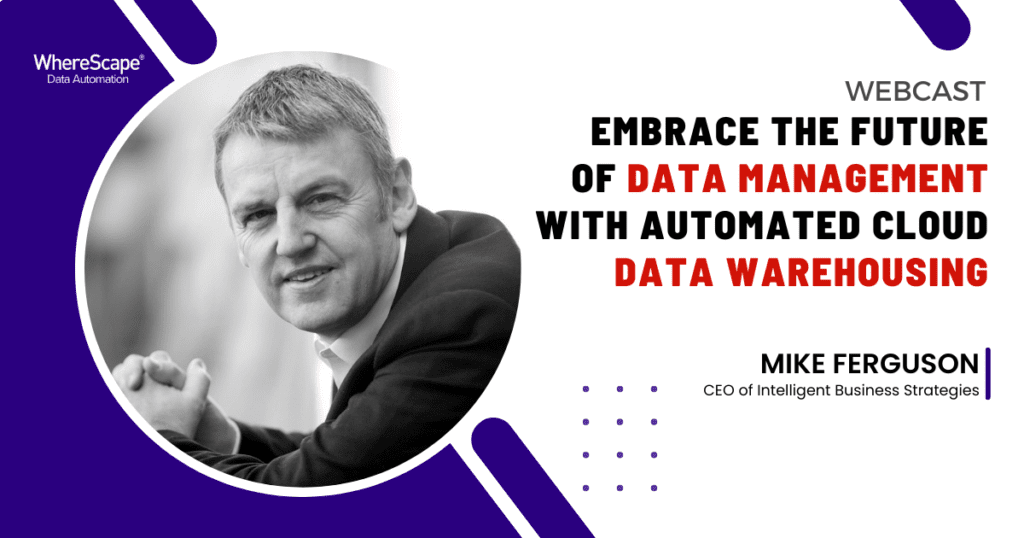
Leverage Automation for Agile Cloud Data Warehousing Solutions
“Embrace the Future of Data Management with Automated Cloud Data Warehousing,” highlighted the transformative potential of cloud data warehousing and automation in reshaping business data management. Led by Brad Kloth and enriched by Mike Ferguson’s insights, we explored the evolution of data warehousing, the rise of lakehouse architecture, and the significant role of automation in enhancing efficiency and decision-making.
If you missed the live session or want to delve further into these insights, the webinar is accessible on demand here—a prime opportunity to see how technological innovations are reshaping data management strategies.
Ready to discover WhereScape’s automation solutions to simplify your data warehousing projects and enhance efficiency? Schedule a demo to see firsthand how our tools can transform your data initiatives, helping your organization stay agile and competitive in the digital era.
ETL vs ELT: What are the Differences?
In working with hundreds of data teams through WhereScape’s automation platform, we’ve seen this debate evolve as businesses modernize their infrastructure. Each method, ETL vs ELT, offers a unique pathway for transferring raw data into a warehouse, where it can be...
Dimensional Modeling for Machine Learning
Kimball’s dimensional modeling continues to play a critical role in machine learning and data science outcomes, as outlined in the Kimball Group’s 10 Essential Rules of Dimensional Modeling, a framework still widely applied in modern data workflows. In a recent...
Automating Data Vault in Databricks | WhereScape Recap
Automating Data Vault in Databricks can reduce time-to-value by up to 70%—and that’s why we hosted a recent WhereScape webinar to show exactly how. At WhereScape, modern data teams shouldn't have to choose between agility and governance. That's why we hosted a live...
WhereScape Recap: Highlights From Big Data & AI World London 2025
Big Data & AI World London 2025 brought together thousands of data and AI professionals at ExCeL London—and WhereScape was right in the middle of the action. With automation taking center stage across the industry, it was no surprise that our booth and sessions...
Why WhereScape is the Leading Solution for Healthcare Data Automation
Optimizing Healthcare Data Management with Automation Healthcare organizations manage vast amounts of medical data across EHR systems, billing platforms, clinical research, and operational analytics. However, healthcare data integration remains a challenge due to...
WhereScape Q&A: Your Top Questions Answered on Data Vault and Databricks
During our latest WhereScape webinar, attendees had fantastic questions about Data Vault 2.0, Databricks, and metadata automation. We’ve compiled the best questions and answers to help you understand how WhereScape streamlines data modeling, automation, and...
What is Data Fabric? A Smarter Way for Data Management
As of 2023, the global data fabric market was valued at $2.29 billion and is projected to grow to $12.91 billion by 2032, reflecting the critical role and rapid adoption of data fabric solutions in modern data management. The integration of data fabric solutions...
Want Better AI Data Management? Data Automation is the Answer
Understanding the AI Landscape Imagine losing 6% of your annual revenue—simply due to poor data quality. A recent survey found that underperforming AI models, built using low-quality or inaccurate data, cost companies an average of $406 million annually. Artificial...
RED 10: The ‘Git Friendly’ Revolution for CI/CD in Data Warehousing
For years, WhereScape RED has been the engine that powers rapidly built and high performance data warehouses. And while RED 10 has quietly empowered organizations since its launch in 2023, our latest 10.4 release is a game changer. We have dubbed this landmark update...
The Assembly Line for Your Data: How Automation Transforms Data Projects
Imagine an old-fashioned assembly line. Workers pass components down the line, each adding their own piece. It’s repetitive, prone to errors, and can grind to a halt if one person falls behind. Now, picture the modern version—robots assembling products with speed,...
Related Content
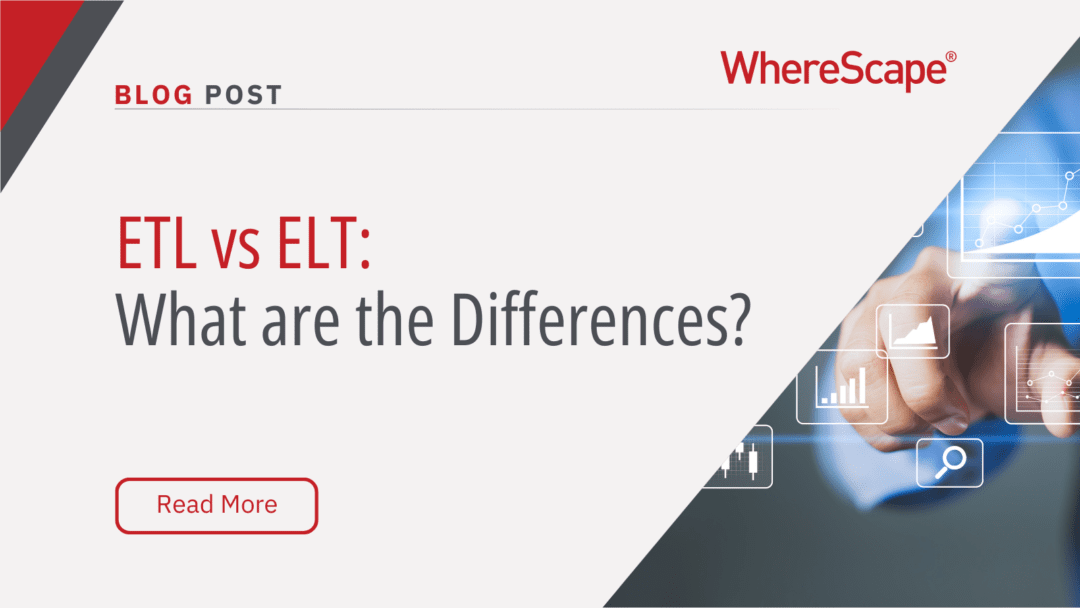
ETL vs ELT: What are the Differences?
In working with hundreds of data teams through WhereScape’s automation platform, we’ve seen this debate evolve as businesses modernize their infrastructure. Each method, ETL vs ELT, offers a unique pathway for transferring raw data into a warehouse, where it can be...
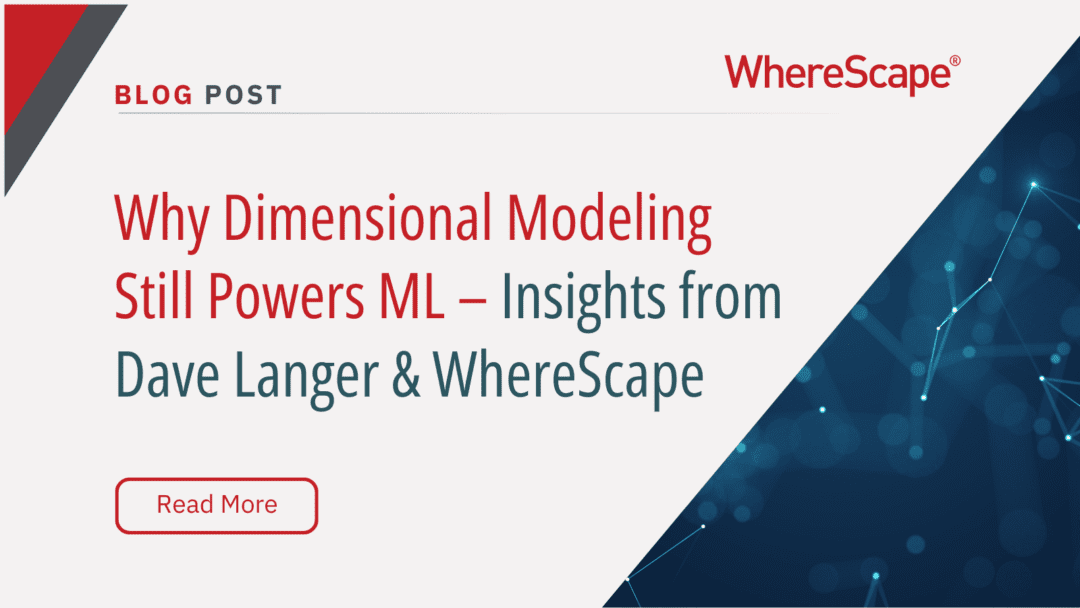
Dimensional Modeling for Machine Learning
Kimball’s dimensional modeling continues to play a critical role in machine learning and data science outcomes, as outlined in the Kimball Group’s 10 Essential Rules of Dimensional Modeling, a framework still widely applied in modern data workflows. In a recent...
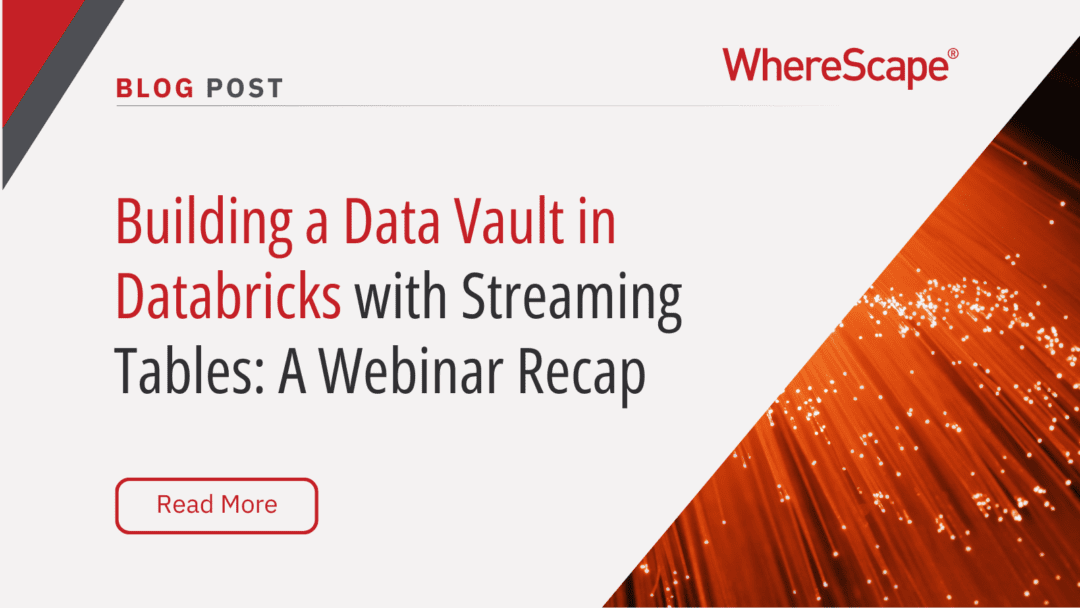
Automating Data Vault in Databricks | WhereScape Recap
Automating Data Vault in Databricks can reduce time-to-value by up to 70%—and that’s why we hosted a recent WhereScape webinar to show exactly how. At WhereScape, modern data teams shouldn't have to choose between agility and governance. That's why we hosted a live...
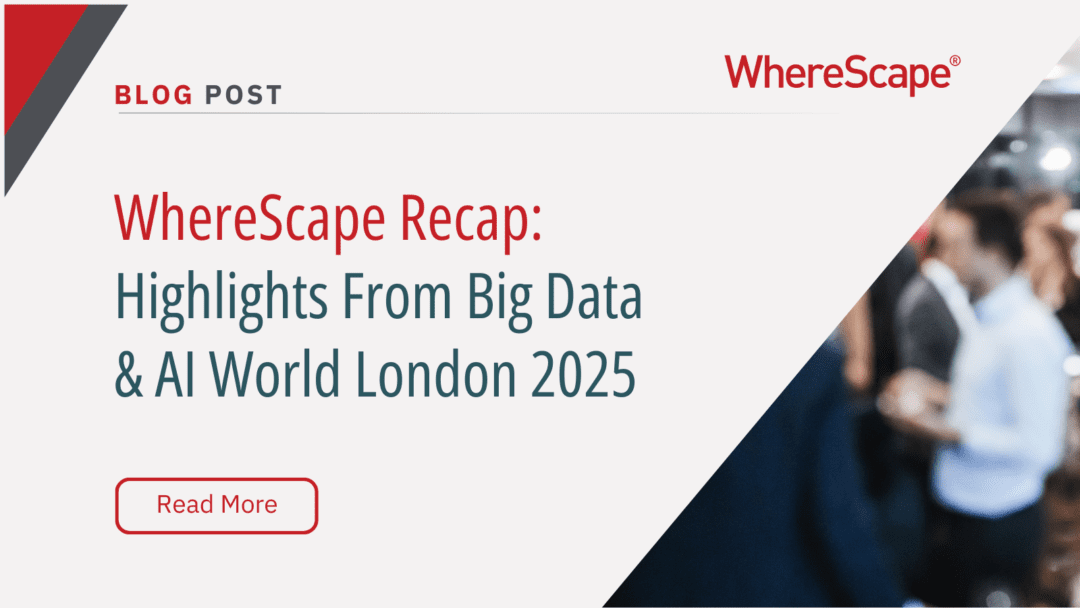
WhereScape Recap: Highlights From Big Data & AI World London 2025
Big Data & AI World London 2025 brought together thousands of data and AI professionals at ExCeL London—and WhereScape was right in the middle of the action. With automation taking center stage across the industry, it was no surprise that our booth and sessions...


